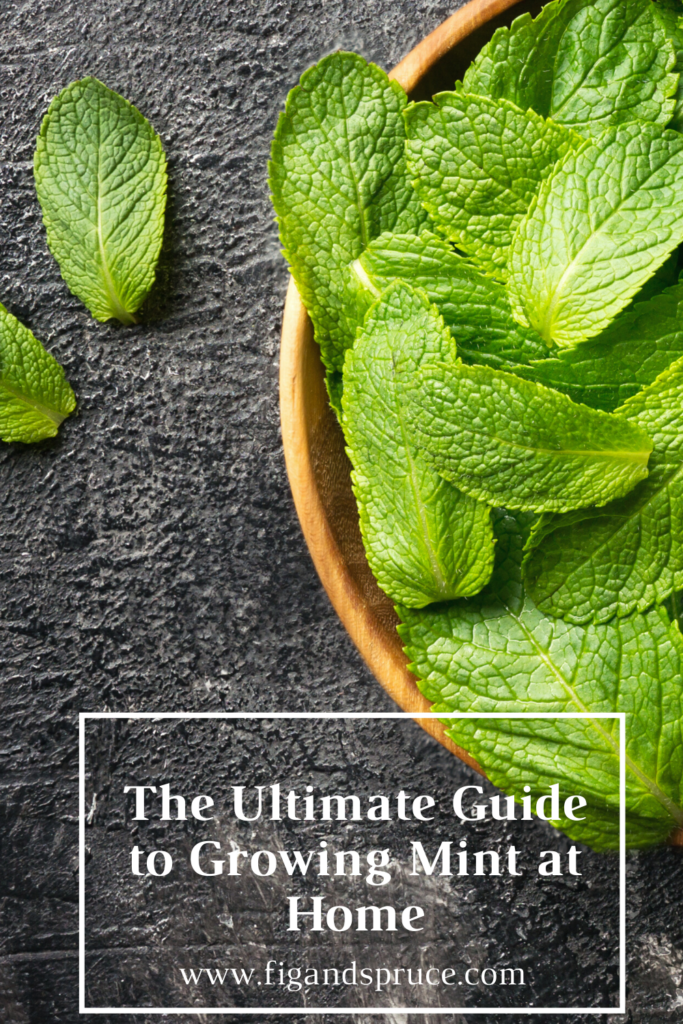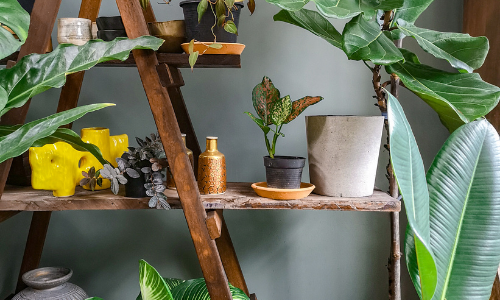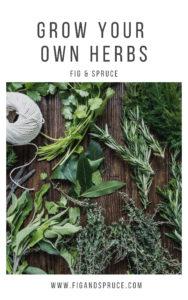Growing mint at home is one of the most popular ways for beginners to start their herb garden. Mint is one of the most well-known and popular herbs known today. From Asia to Australia, many expert gardeners and botanists enjoy growing this herb because of its sweet smell and refreshing taste. Although the US grows more than two-thirds of the mint produced in the world, it is grown across every country.
Whether it be tea or a full-fledged meal, mint is used in a variety of dishes. Mint is also one of the most versatile and diverse herbs known to mankind. There are surprisingly more than 600 varieties of mint that boasts various tastes and colors. Although generally known for its sweet and refreshing taste, there are several varieties of mint which possess a different flavor. For example, orange mint is somewhat sour while Red Raripila Mint is used to produce poisonous oils.
Because of these benefits, it is always a good idea to grow mint in your backyard (or wherever you like!). Although growing a mint is fairly simple, there are some points that might trouble young and novice gardeners. That is why we have written this elaborate guide that takes you through all the necessary steps to make your mint garden bloom in no time!
Table of Contents
Light Requirements for Growing Mint
The importance of sunlight for a plant cannot be underestimated. Mint needs a sufficient amount of light to thrive. Ideally, mint grows best in full sun (six to eight hours of sunlight per day). However, with regular watering and maintenance, they grow fairly well in full sun as well. It is one of the few edible herbs that can grow well in both of these settings. Mint belongs to the hardy perennial species of plants and can survive rough weather.
Soil Requirements
Mint prefers a mix of fertilized and moist soil. They show the best growth in well-drained soil with a layer of mulch on top. A pH range of 6.5-7 is known to promote optimum growth. Although mint can grow in a variety of soil types, a soil that has sufficient content of minerals and organic matter would be the best choice.
Steps to Growing Mint at Home
The most important step in growing a mint plant is planting the seed and making sure that the mint germinates on time. Follow this step-by-step guide to ensure that your mint plant grows perfectly.
- Buy a mint seed or plant from the nearby store. Mint seedlings are accessible and can be purchased from any nearby plant nursery.
- Although mint is a sturdy plant, it is best to grow it during spring. During this season, the ample rainfall and moderate temperature are conducive for a mint’s growth.
- The majority of expert gardeners suggest growing mint in pots. This is one of the easiest ways to reap the benefits of this plant since you will be able to use it frequently.
- Choose a spacious pot a foot wide and 8-10 inches deep. This would give the seedlings sufficient space to grow.
- While planting the seedlings, make sure that the seeds are at a sufficient distance from each other, at least at a distance of 12-16 cm from its neighboring seed. The reason for this is that mint grows strong roots which can deteriorate the root structure of nearby seedlings.
- Keep the plant soil moist and provide sufficient light. Do not over-fertilize, since it will affect the mint’s flavor.
- If you are having trouble growing the seedling, you could always try transplanting. It is easier and much faster.
- Grow the mint at a place with adequate sunlight. Morning sun and partial shade encourage the growth of a mint plant.
- Water the plant twice or thrice a week. However, soggy and wet soil limits growth, so try to avoid overwatering your plant. Keep the soil moist but not overwatered. You can use a soil moisture meter to help estimate this too.
Water Requirements
Mint is not one of those herbs that require extensive watering. If you live in a dry climate with lots of direct sunlight, watering the mint plants 3 to 4 days a week should be enough. However, if you live in a cool, humid climate even watering them twice a week would do.
If the soil feels dry on touching, you should add water. Keep in mind that both under-watering and over-watering mint plants can result in poor growth and the plants may die. If you’re unsure or want to be certain you’re at the right water level, we recommend using a soil moisture meter to measure your plant’s moisture levels accurately.
How to add fertilizers to a mint plant
Fertilizers stimulate the rapid growth of a variety of plants. If you are planning on harvesting heavily, adding an adequate amount of fertilizers would make sure that the mint matures early.
Mint prefers slow-release of granular fertilizers, like this one from Miracle Gro. The fertilizer should be added in small quantities to the plant is in the early stages of its development. It is better to ensure that the fertilizer does not touch the leaves of mint, otherwise it will affect the taste and flavor of mint.
Care and Maintenance Tips
- The best thing about mint plants is that they grow with minimal care. If you are growing mint in any outdoor setting, then adding a light layer of mulch ensures maximum growth.
- If you are growing potted mint indoors, simply make sure that they are watered regularly and are receiving ample sunlight.
- Mint plants are known for their aggressive growth. At times, it will become difficult for you to limit their growth. To avoid such circumstances, keep their growth in check; if they are growing out of space, then either transfer them to a more spacious pot or cut them.
- When the mint is fully flowered, it is time to prune them. With a pair of scissors, cut about one-third of the plant stem.
- Be weary of cracked pots. If the pot is cracked, the mint roots will continue to spread by moving out of the pot.
- Although mint does not attract lots of insects, pests and fungi might damage the plant. Using a fungicide restricts the growth of any unwanted fungus.




